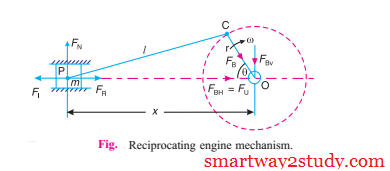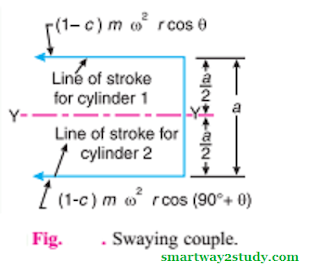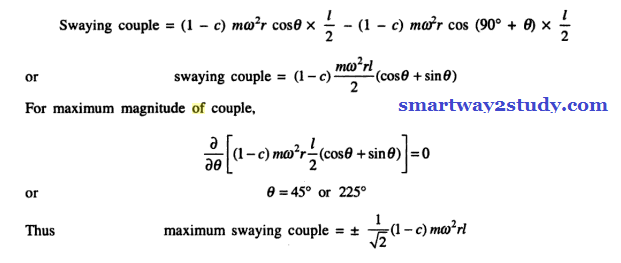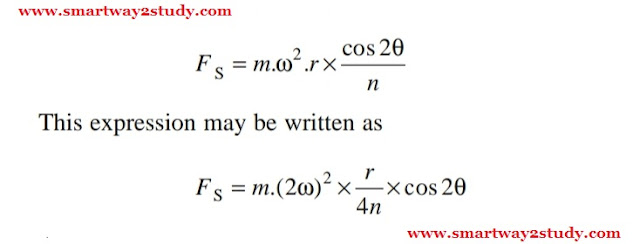When the connecting rod is not long (i.e. when the obliquity of the connecting rod is considered), then the secondary distributing force due to the reciprocating mass arises.
We have discussed in previous articles, that the secondary force,
As in case of primary forces, the secondary forces may be considered to be equivalent to the component, parallel to the line of stroke, of the centrifugal force produced by an equal mass placed at the imaginary crank of length r/4n and revolving at twice the speed of the actual crank (i.e. 2ω ) as shown in fig.,
Thus in multi-cylinder in-line engines, each imaginary secondary crank with a mass attached to the crank pin is inclined to the line of stroke at twice the angle of the actual crank. The values of the secondary forces and couples may be obtained by considering the revolving mass. This is done in the similar way as discussed for primary forces. The following two conditions must be satisfied in order to give a complete secondary balance of an engine:
1. The algebraic sum of the secondary forces must be equal to zero. In other words, the secondary force polygon must close, and
2. The algebraic sum of the couples about any point in the plane of the secondary forces must be equal to zero. In other words, the secondary couple polygon must close.
Note: The closing side of the polygon gives the maximum unbalanced secondary force and the closing side of the secondary couple polygon gives the maximum unbalanced secondary couple.




























